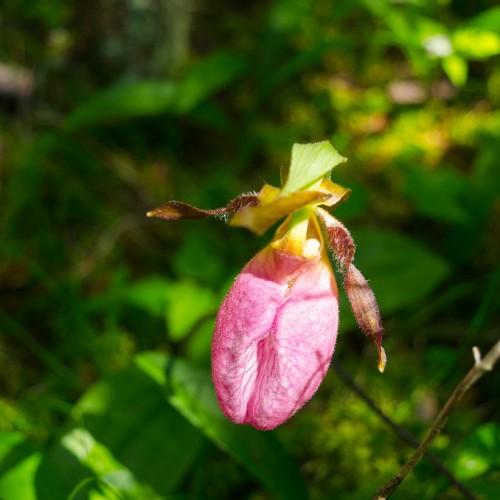
Pink Lady’s Slipper
Cypripedium acaule
Cycle:
Perennial
Watering:
Average
Hardiness Zone:
Sun:
Partial sun Shade
Soil:
Sandy,Loamy,Humus
Leaf:
Yes
Growth Rate:
Low
Care Level:
Moderate
watering
Pink Lady's Slipper (Cypripedium acaule) requires moist, well-draining soil and even levels of moisture throughout the growing season. During the spring and summer months, keep the soil evenly moist, watering it thoroughly every other day. Avoid overwatering, as this can cause the roots to rot. During the fall and winter months, reduce watering and only water the plants when the soil becomes dry. Be sure to water deeply and thoroughly to ensure that the roots receive adequate moisture.
sunlight
Pink Lady's Slipper (Cypripedium acaule) is an herbaceous perennial plant that grows in moderately shaded wooded areas. This plant species prefers to grow in soil that is sandy-loam to medium-loam and slightly acidic. It is best to provide Pink Lady's Slipper with medium to full shade, with no more than 4 to 5 hours of direct sun daily. The plant will also benefit from dappled shade, thanks to nearby trees or shrubs that provide light shade but allow some sun to reach the plant. If planted in an area with too much direct sun, the foliage may become scorched and the flowers weak.
pruning
The amount and frequency of pruning for Pink Lady’s Slipper (Cypripedium acaule) should be minimal. Since this species is an herbaceous perennial, it prefers not to be disturbed. Pruning should only be done if absolutely necessary and should be limited to removing dead or damaged stems. Pruning should also be done in late winter or early spring, while the plant is still dormant, so that the pruned growth will not be targeted by potential pests. Since Pink Lady's Slipper is a low-growing plant, pruning should also take into account whether regular mowing will be needed in the area, as well as making sure the pruning does not inhibit the growth of surrounding plants.
